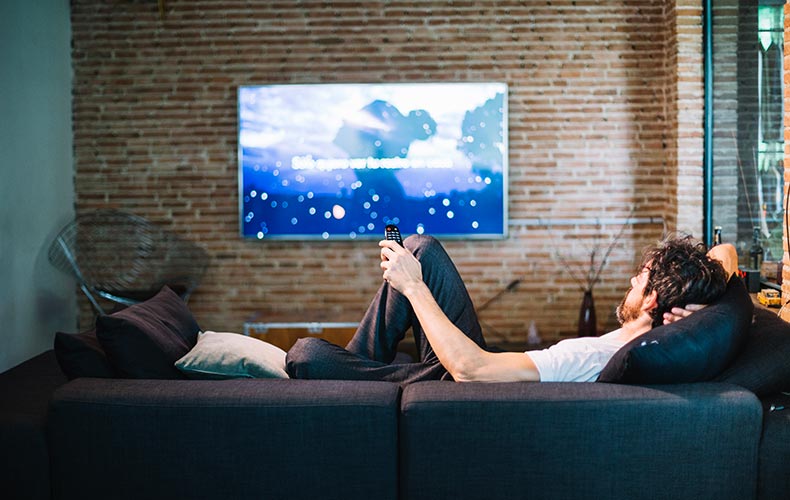The Ultimate First-Time Home Buyer’s Furniture Guide: What You Actually Need
Introduction
Moving into your first home is exciting, but it can also feel overwhelming when you realize just how much furniture you need. It’s easy to get caught up in wanting to fill every room right away, but rushing into purchases can lead to overspending or ending up with things you don’t actually need. The key is to prioritize essentials, invest wisely in quality pieces where it matters, and furnish your home in stages. Having a comprehensive checklist ensures that nothing is forgotten and helps manage your budget effectively. Saving products to your Big Ticket board helps you compare options, stay organized, and stick to your budget.
This guide breaks down the essential furniture you need in each room, offering smart tips on where to save and where to splurge. By the end, you’ll have a clear idea of how to furnish your new home without unnecessary stress or expense.
Furnishing Your Living Room: Start with the Basics, Including a Coffee Table
The living room is often the heart of a home, where you unwind, host guests, or catch up on your favorite shows. The first and most important piece to invest in is a comfortable sofa or sectional. Since you’ll use it daily, choose one that fits your space and offers durability. If you’re on a budget, consider buying a good-quality used sofa or waiting for sales.
A coffee table or multipurpose ottoman is another useful addition, providing a place for drinks, books, or even extra storage. If you plan to have a TV, decide whether a media console or a simple wall mount is the best fit for your space. When it comes to lighting, don’t just rely on overhead lights—a floor lamp or table lamp can create a cozy atmosphere, especially if your living room lacks natural light.
If you have the budget, extras like accent chairs, bookshelves, or an area rug can enhance the space, but they aren’t immediate necessities. Many people make the mistake of over-furnishing their living room right away, but starting with the essentials allows you to get a feel for the space before adding decorative elements.
Creating a Functional and Comfortable Bedroom: Start with the Bed Frame
Your bedroom should be a relaxing retreat, and that starts with having the right bedroom essentials like a good bed and mattress. While it’s tempting to go for a cheap option, a high-quality mattress is one of the best investments you can make for your health and comfort. If you need to save money, consider buying a simple bed frame and upgrading to a headboard later.
Next, consider storage solutions. If your home has a built-in closet, you may not need a dresser right away, but if closet space is limited, a dresser or wardrobe can help keep your clothes organized. A bedside table is also important for convenience and organization, offering a place for bedside lamps, books, or charging your phone.
Extras like a full-length mirror, a vanity, or decorative bedding can enhance the space but aren’t immediate priorities. Focus first on comfort and organization, and add decorative elements over time.
Setting Up Your Kitchen and Dining Area
A well-equipped kitchen is essential, but when it comes to furniture, your needs will depend on your space. If your home includes a designated dining area, a table and chairs should be a priority. For smaller spaces, a compact dining set or a foldable table can be a smart solution. Consider exploring garage sales as a cost-effective option for finding these items.
Beyond furniture, make sure you have the basics for cooking and eating—plates, utensils, and essential cookware. Many first-time homeowners overlook the importance of storage solutions, but investing in cabinet organizers, pantry shelves, or a simple rolling cart can help keep your kitchen functional without cluttering countertops.
If you have a kitchen island or bar seating, bar stools can be a worthwhile addition, but they’re not an immediate necessity. Similarly, coffee stations, fancy dinnerware, and table decorations can wait until you’ve settled in.
Making Your Bathroom Functional and Comfortable: Don’t Forget Bath Towels
Furnishing a bathroom is simpler than other rooms, but there are still a few essentials to consider. Start with shower curtains, bath mats, bath towels, and towel sets—these small details make a big difference in both comfort and functionality. Storage solutions are also crucial, especially in small bathrooms. Whether it’s an over-the-toilet shelf, under-sink organizers, or simple baskets, keeping essentials neatly stored will make your space more enjoyable to use.
Upgrades like a high-end showerhead, decorative storage solutions, or plush towels can improve the feel of your bathroom, but they aren’t immediate must-haves. Prioritize practical items first, and gradually add luxury touches as your budget allows.
Setting Up a Home Office (If You Work from Home)
If you work remotely, creating a functional office space is key. The most important purchase will be a desk and a comfortable, ergonomic chair. Many first-time homeowners try to work from their dining table or couch, but investing in a dedicated workspace will make a significant difference in productivity and comfort. Including a first apartment checklist can ensure all necessary items are included.
Storage is another factor to consider—bookshelves, filing cabinets, or a small rolling cart can help keep your workspace organized. While it may be tempting to go all-in with decorative touches, keep your setup minimal at first. Over time, you can add items like a second monitor, cable management solutions, or stylish office décor to enhance your space.
Creating an Apartment Checklist
A comprehensive apartment checklist is essential to ensure that you don’t forget anything important when furnishing your new space. Here’s a list of items to consider for your first apartment:
The Final Touches: Other Essentials for a Well-Equipped Home – A First Apartment Checklist
Beyond furniture, there are a few household essentials that every first-time homeowner should have. A vacuum cleaner or broom is necessary for keeping your space clean, and a laundry hamper and drying rack will keep clothes organized. It’s also a good idea to have a basic toolkit on hand for small repairs—things like a hammer, screwdriver, measuring tape, and level will come in handy more often than you think.
Finally, don’t forget emergency essentials like a first-aid kit, fire extinguisher, and smoke detectors. While these may not be exciting purchases, they’re important for keeping your home safe. When setting up your new bedroom, selecting appropriate bedroom furniture is crucial to create a fresh and personal environment.
Conclusion: Furnish Wisely and Take Your Time
Furnishing your first home doesn’t have to be stressful or expensive. Start with the essentials, focus on comfort and functionality, and gradually add decorative elements as your budget allows. Prioritizing quality for key items like your sofa, mattress, and office chair will save you money in the long run, while saving on things like coffee tables, nightstands, and decorative accessories can help stretch your budget.
Using your Big Ticket board to save products is more than just a way to bookmark items—it’s a powerful tool to help you make smarter shopping decisions. By keeping all your potential purchases in one place, you can easily compare features, prices, and reviews without jumping between multiple tabs or websites. This not only streamlines your shopping experience but also helps you track price changes and spot the best deals. Plus, having a visual overview of your selections allows you to prioritize essentials, avoid impulse buys, and ensure every purchase fits within your budget. Whether you’re furnishing your first home or upgrading your space, your Big Ticket board makes the process more efficient, stress-free, and financially savvy.Remember, your home doesn’t have to be perfect overnight. Take your time, enjoy the process, and create a space that truly feels like home.
- Tags:
- Shopping Tips






